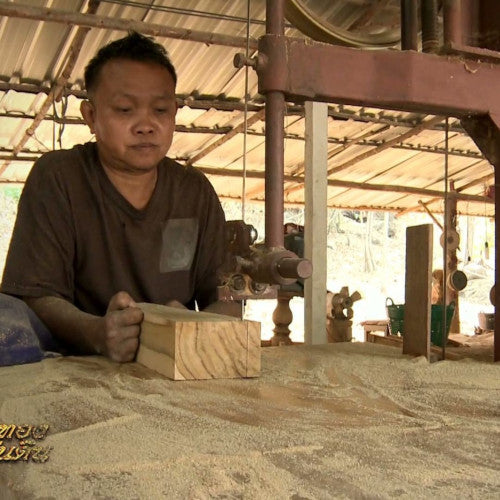
From Slash and Burn to Sustainable Communities
Historically the villagers of Baan Lek and other surrounding villagers, were slash and burn farmers, occupying a piece of land, clearing it, felling and burning it, farming it until the land was degraded and then moving on.
It was subsistence farming, and many of the younger men and women would leave for the cities to work. often in jobs that were not pleasant.
Approximately 30 years ago, the then Thai Queen gave them a piece of land on the edge of a Native Reserve, in the North of Thailand, and sent in army specialists to set up fish farms, organic farms and the tools and training for handcrafting wooden utensils.
Because the village was in the hills that make up the beginnings of the Himalayas, they chose trees carefully, and sparingly, and tried to make as much use from repurposed Teak wood as possible, offcuts from building and furniture factories.
They also began to replant areas of the hills that had been cleared, restoring forest cover so hillsides did not erode in the monsoon rains.
But the environmental work became possible because the villages had been given a sense of place and purpose. There was no longer a need for women and men to leave and head to Bangkok or Chiang Mai.
The pilot project of one village has now spread to encompass several villages, whose people have seen the differences it has made in the original village.
Quite literally, each wooden bowl, each wooden spatula, is not only handmade in these villages, the wood for it comes from trees that the villagers themselves tend. Their is no clear felling, no indiscriminate cutting down, as that directly impacts their lives and welfare.
The villages have ownership of their products, they are not beholden to large companies or corporates who live in distant places with no care for the land or the people.
It is not a perfect model but it is a sustainable model, both for the environment and the people.
Leave a comment